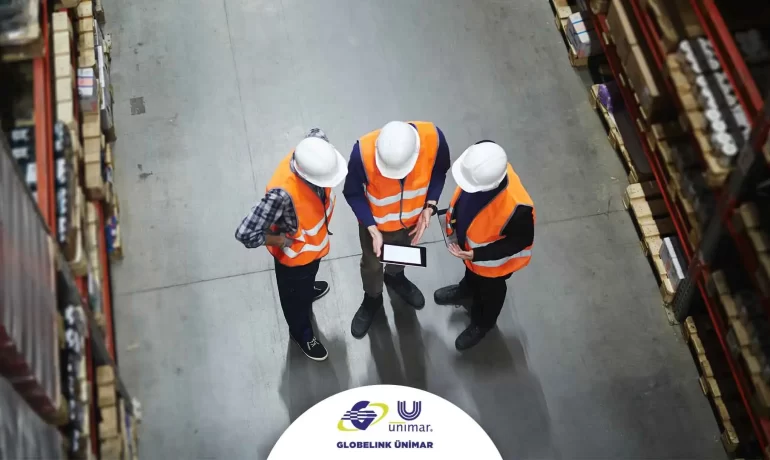
- February 20, 2023
- Blog
Servitization is becoming a major trend that will affect almost all sectors İn the modern world. Mobility is one of these sectors and it is expected that there will be serious paradigm changes very soon. It is clear that a transportation model in which everyone owns a vehicle is not sustainable in today’s world where urban populations are increasing. It is for this reason that many car-sharing applications are in great demand by users.
For this reason, we will increasingly head toward MaaS (Mobility as a Service) providers to meet our transportation needs. MaaS is a transportation model that aims to integrate different modes of transportation into a single platform and allows users to easily plan, book and pay for their trips. We can think of MaaS as demand-driven mobility. The purpose of MaaS is to make people’s transportation easier and more convenient, while at the same time reducing traffic congestion and reducing the environmental impact of transportation by promoting the use of public transportation and alternative modes of transportation such as car sharing and cycling.
MaaS operators will offer customers multiple transportation options through a single payment channel and app. For example, through a MaaS provider, you could borrow a car for a few hours, rent an e-scooter later that day, and take the subway back home the same day. You will do all of these on a single platform and you will make your payments through that platform.
MaaS provides access to mobility rather than ownership. In this context, it is thought that in the future, the vast majority of city dwellers will never own a car. Even now, in many parts of the world, the percentage of young people who have a driver’s license is declining drastically compared to the past.
The Advancements in MaaS Can Facilitate Urban Transport
MaaS is a data-driven, user-centric system powered by the advancement of smartphones. However, for MaaS to work effectively, many conditions must be met. First of all, widespread smartphone usage is a necessity for MaaS. Because MaaS is an application that can serve through smart devices. In addition, secure, dynamic, and up-to-date information must be obtained at high connection levels. Many different actors will need to cooperate to meet these conditions: telecommunications companies, payment service providers, public and private transport providers, and local governments. As a result of all stakeholders working together in harmony and coordination, an effective and efficient MaaS service will be offered.
In this context, perhaps the most important stakeholder will be public transport systems. Public transport brings a lot of economic benefits to citizens and businesses, and thanks to developments in MaaS solutions, more resources are becoming available for citizens’ urban transport. Transportation is a very serious expense item for most households. Good public transport significantly reduces transport costs for people with relatively easy access to public transport systems. Taking the bus or subway to work is much cheaper than owning a personal car. MaaS technology has the potential to make public transport more efficient while reducing the public’s dependence on cars.
MaaS Solutions Will Provide Serious Efficiency for Transport Planners
In order to meet growth in cities and support business and commerce, it is now a must that urban transport becomes smarter. Public transport investments will be needed, but they will need to be smart, connected, and shared. New public and private MaaS solutions will provide significant efficiency for transportation planners, leading to more users enjoying the economic benefits of these services. However, there are some problems in front of the fully integrated use of MaaS systems. MaaS will be subject to a variety of regulatory and policy issues, including liability, insurance, and security-related questions. The policies to be implemented and the regulations to be prepared by the decision-makers in these matters are of great importance. There is also a need for users to adopt MaaS services instead of using their tools. As with all new technologies, users may hesitate to use MaaS services. In particular, convincing people to use MaaS instead of tools will pose a serious challenge for service counters if MaaS is not perceived as convenient or reliable by users.
Policies to Promote the Adoption of MaaS are Spreading
Despite all the difficulties, many countries have come a long way in terms of MaaS. Finland is a leader in the development of MaaS and the Helsinki region is home to many successful MaaS pilot projects. The Finnish government has also supported MaaS with policies and initiatives aimed at promoting the adoption of MaaS. Sweden has also made significant progress in the development of MaaS and many successful MaaS pilot projects have been implemented in the country. The Swedish government has supported the development of MaaS through initiatives such as the “MaaS for All” project, which aims to make MaaS available to all citizens.
Many different modes of transport are used in urban transportation in our country and especially in big cities. In cities with a high population density such as Istanbul, the use of personal vehicles loses its advantage for many users due to many reasons such as traffic congestion, high costs, parking problem, etc. However, due to the density and long travel times in public transportation systems, users are hesitant to choose these transportation modes. MaaS services, which will enable the integration of many different types of transportation such as public transportation, car rental, car sharing, and bike sharing, will play an active role in urban transportation in our big cities.
PAYLAŞ:
Artificial Intelligence is Both Changing and Transforming
Today, we can see the clues that we will
The Future of the Cargo Market is Shaped by e-commerce
The e-commerce industry has been growing rapidly since the



